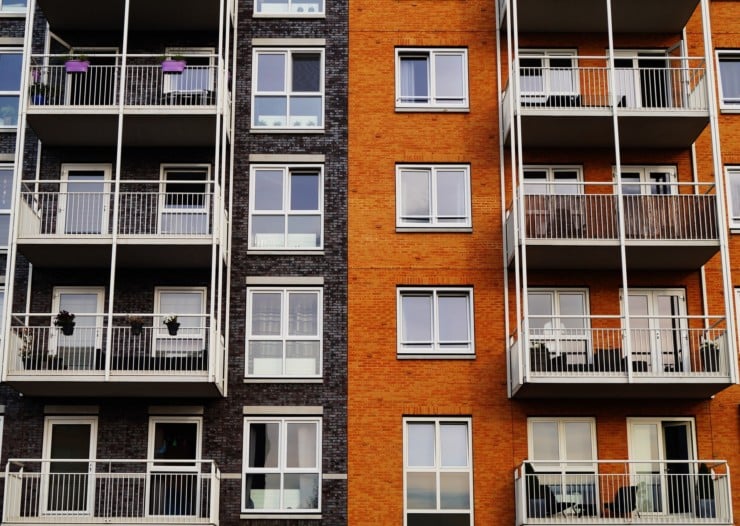How Do I Know If My Home Is Within City Limits?
There are several factors that may prompt you to determine if your residence falls within the city boundaries.
Maybe you want to be close to opportunities, entertainment joints, better public transport or want to benefit from the city’s utilities.
Whatever your reason, there are several ways you can find out if you live within the city limits.
Best Ways to Know If Your Home is Within City Limits

One of the best ways to determine if your home is within the city is by conducting an online search.
However, this might not give you a conclusive answer, especially if the city doesn’t have a dedicated portal to help you determine your home’s location.
Alternatively, you can talk to your local authorities to determine if your home is in the city.
Let’s expound on the two techniques below.
Conduct Online Research
Depending on your location, an online search might be enough to determine whether your home is within or outside city limits.
Most cities or counties will have maps with GIS (Geographic Information Systems) pages where you can enter your street name and number on an interactive map to determine your home’s location.
Typically, the information you get from entering your home’s details will have “City Limits” or mention a city name.
However, some systems use numerical designations to mark properties within and outside city limits.
For instance, Georgia’s Gwinett County uses the numerical code “01” to show that an address is outside the city limits.
Enquire From the Local Authorities
Your local authorities are the best sources of information to help you determine if your home is within city limits. Some of the city departments to reach out to via call or email include:
- Taxation authorities
- Zoning and building inspectors
If your home is within city limits, the city’s taxation authorities may have your details on file.
Similarly, zoning and building inspectors are charged with enforcing city ordinances on property within city limits.
Should your home be within the city’s boundaries, either or both authorities will have a file on your property.
My Postal Address Has a City Name. Does it Mean My Home is Within City Limits?
Most people believe they’re within city limits because their mailing address has a city name. However, mailing addresses don’t tell where your property lies.
When the U.S. Postal Service is assigning addresses, it assigns them based on the post office that will be receiving and delivering your name – not your home’s location.
Pros and Cons of City Living

There are numerous advantages and disadvantages to living within the city. Here are a few:
Pros
Better Infrastructure and Public Transport
Most cities are jam-packed with people and traffic, driving many city authorities to improve road infrastructure and public transport services.
Living in a city means you have better access to public transport, saving you the headache of finding parking and spending hours in traffic.
Similarly, city limits have better roads, sanitation, and housing infrastructure as authorities invest more where the population is higher.
Access to Opportunities & Higher Salaries
Cities attract a higher population, bringing more opportunities to establish a business or find a job.
Similarly, employers in the city are willing to pay higher salaries as they can charge more for their services and compensate for the higher cost of living.
Ample Dining Options
Whether you live in a city or outside it, you may need to go out to eat once in a while.
While eating out in the city is more expensive, the ample options available are enough to find an affordable restaurant.
Similarly, if you like going to entertainment spots, cities host the best and most vibrant in any region.
Cons
Higher Cost of Living
The higher population in cities means there is competition for most services. As a result, rents are higher, and food and services are more expensive than in rural areas.
Research shows that on average, a city dweller spends 18% more than a rural dweller.
Similarly, statistics show that those living in the city are only able to save about 30% of what suburban families are able to save, pointing to the disparities in the cost of living between the city and rural households.
Limited Space & Noise pollution
Cities are often densely populated, which means space is limited, so you can’t have the privacy you would in a rural setting.
Similarly, there is more noise and environmental pollution in densely populated areas.
Higher Crime Rates
Crime rate statistics show that crime rates in cities are three to four times higher than in rural communities.
Cities tend to have more economic disparities than rural communities.
As a result, the disparaged communities living in cities where there are huge gaps between the rich and the poor tend to get into crime to fend for themselves.
However, crime tends to be lower where:
- There is low discrimination
- Basic services are available for everyone
- There are opportunities for young people
Frequently Asked Questions
What does it mean to live inside city limits?
Living inside the city limits means you’re bound by the city’s laws and regulations. Typically, these regulations will include taxation, zoning, and building codes.
How can I determine if a house is outside city limits?
You can determine if a house is outside the city limits in several ways.
First, you can search online to determine the location of the house.
Secondly, you can contact your local city authorities, give them the home address, and ask them whether the home is within the city limits.
How do I tell if my address is city or county?
One of the best ways to tell the location of your address is to check your tax appraisal district website.
Most federal or county tax websites allow you to look up which entity you pay tax to by entering your home address.
How can I get a city limits map?
You can get the city limits map by visiting your city’s website and searching “city limits” or “boundary maps.”
Additionally, you can use tools on sites such as HomeTownLocator to search boundary maps. You only have to enter the street address, city, and state.
Alternatively, try Googling your city and town, followed by “boundary map.”
Final Thoughts
As we’ve established above, it’s easy to determine if your home is within city limits if you know where to look.
However, while an online search might be enough, we recommend finding out from your local authorities as they’re charged with determining which properties are within the city.







